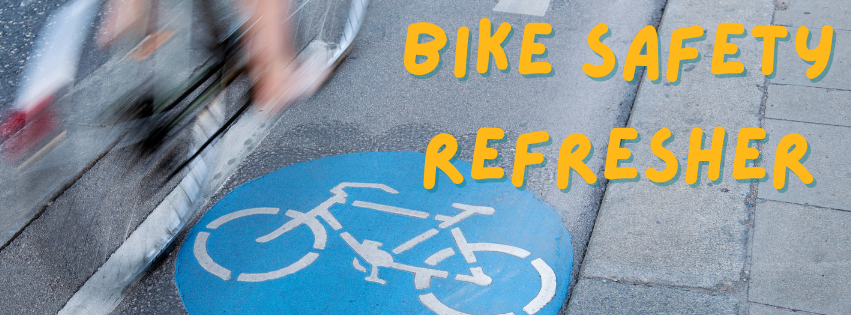Bike Safety Refresher
Posted on May 15, 2024
Whether you are new to biking or a pro, you can learn about bicyclist-related laws, safety tips, and your rights and responsibilities as a bicyclist at the Washington State Department of Transportation website.
Obey traffic signs and signals. Bicyclists must follow the rules of the road like other vehicles.
Never ride against traffic. Motorists aren't looking for bicyclists riding on the wrong side of the road. State law and common sense require that bicyclists drive like other vehicles.
Follow lane markings. Don't turn left from the right lane. Don't go straight in a lane marked "right-turn only."
If riding on a limited access facilities where bicycling is permitted, use the off and on ramps at interchanges.
Don't pass on the right. Motorists may not look for or see a bicyclist passing on the right.
Scan the road behind you. Learn to look back over your shoulder without losing your balance or swerving. Some riders use rear-view mirrors.
Keep both hands ready to brake. You may not stop in time if you brake one-handed. Allow extra distance for stopping in the rain, since brakes are less efficient when wet.
Wear a helmet and never ride with headphones. Always wear a helmet. Never wear a headphone while riding a bike.
Dress for the weather. In the rain, wear a poncho or waterproof suit. Dress in layers so you can adjust to temperature changes. Wear bright-colored clothing.
Use hand signals. Hand signals tell motorists and pedestrians what you intend to do. Signal as a matter of law, of courtesy, and of self-protection.
Ride in the middle of the lane in slower traffic. Get in the middle of the lane at busy intersections and whenever you are moving at the same speed as traffic.
Choose the best way to turn left. There are two choices: (1) Like an auto: signal to move into the left turn lane and then turn left. (2) Like a pedestrian: ride straight to the far side crosswalk. Walk your bike across.
Make eye contact with drivers. Assume that other drivers don't see you until you are sure that they do. Eye contact is important with any driver who might pose a threat to your safety.
Use a mirror so you know when drivers are behind you.
Look out for road hazards. Watch out for parallel-slat sewer grates, gravel, ice, sand or debris and pedestrians on the shoulder. Cross railroad tracks at right angles.
Use lights at night. The law requires a white headlight (visible from at least 500 feet ahead) and a rear reflector or taillight (visible up to 300 feet from behind).
Keep your bike in good repair. Adjust your bike to fit you and keep it working properly. Check brakes and tires regularly. Routine maintenance is simple, and you can learn to do it yourself.
For more information on sustainable travel options and how to log your travel for rewards, visit ChooseYourWayBellevue.org

